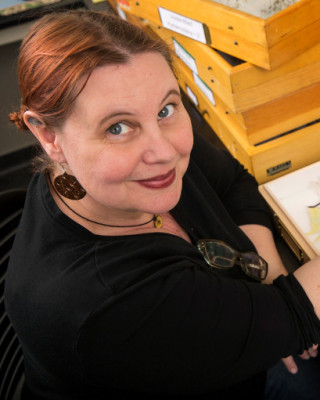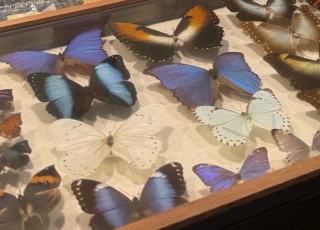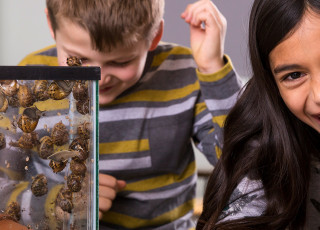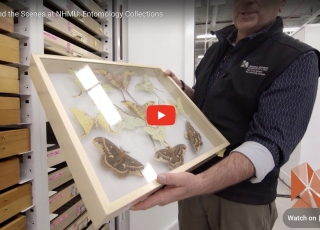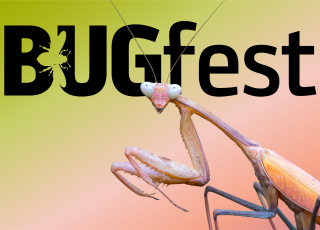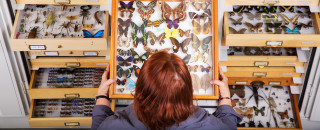
©Mark Johnston | NHMU
Invertebrate Zoology
The Invertebrate Collections at NHMU consist of insects, arachnids, leeches, and mollusks. Our specimens are kept pinned, papered, frozen, and in alcohol. With specimens dating back to the late 1800s, we have a lot of history to care for! The collection was built by hundreds of people, both academics and laypeople, painstakingly turning their curiosity about the natural world into valuable specimens that tell stories about the ecology of a time and place. It’s our job to balance caring for these exquisitely beautiful and delicate specimens so they can continue to be of value to future generations, while also sharing them with the widest audience possible in the here and now.
Work in the collection is conducted by wonderful volunteers of all ages and college interns. We are constantly adding new specimens to our database. Additionally, we work with our citizen science coordinator and partners throughout the intermountain west to document the bioluminescent fireflies of western North America.
Though we’re unable to share all of the specimens we hold in our exhibit spaces, you can access almost all our holdings at these databases: entomology and arachnids and non-insect invertebrates. Please let us know if you have any questions about the information you find here.
If you have a specimen that you would like identified, there are many resources available that can help with an identification such as iNaturalist, the Utah State Extension offices located throughout Utah, or a variety of specialized Facebook groups such as “Insect Identification”.
If you have a medical question, such as a bug bite, please contact a physician as we are unable to answer questions of that nature.
For questions about donating specimens, please contact the invertebrates collections manager, and please note we are not accepting donations of marine shells at this time.
Did you know...
Our oldest entomology specimen is from 1893!
Invertebrate Zoology Collection Highlights
-
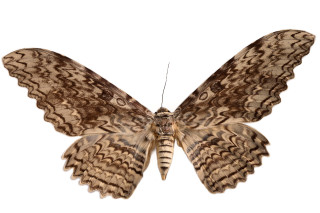
White Witch Moth
This white witch moth Thysania agrippina was named by famous early entomologist Maria Sibylla Merian in 1705. This species is believed to hold the record for largest wingspan of any living insect. The common name comes from its ability to thwart early (and even modern!) attempts to collect and understand its biology.
Catalog #: none
-
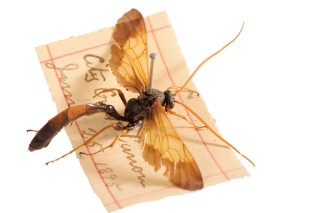
Wasp
This wasp shows one of the wonderful things about our collection, that some of the specimens tie us to place, and to history. The label shows a canyon that is only five miles northwest from the museum, but this specimen was collected more than 120 years ago.
Catalog #: none
-

Mormon Cricket
Mormon cricket, Anabrus simplex. This specimen is a special one, as it's not part of our research collections, but part of the exhibit history of NHMU. It was taxidermied for a display about seagulls and Mormon crickets, in our previous building. The antennae are wires! We don't not know the artist who did this work, but they did a brilliant job and we're still enjoying their efforts today, at least 50 years into the future.
Catalog #: none
-
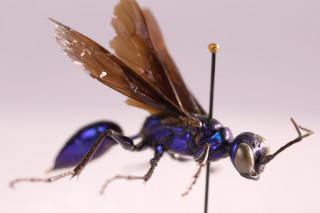
Blue Sphecid Wasp
This stunning blue sphecid wasp was donated by local amateur entomologist Stan Schulze. He amassed an impressive collection of thousands of insects with complete data and enhanced the scientific record by donating them to NHMU. SCAN record
Catalog #: UMNH.ent.0047365
-
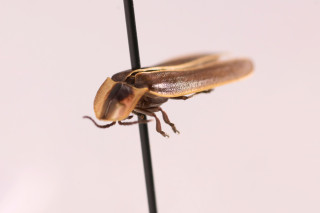
Firefly
Pyractomena dispersa, this is one of the firefly specimens that are part of our Western Firefly Project. It’s especially dear to our hearts because it was collected early on in the project’s history, by one of our collaborators, Dr. Seth Bybee.
Catalog #: UMNH.ent.0015366
-
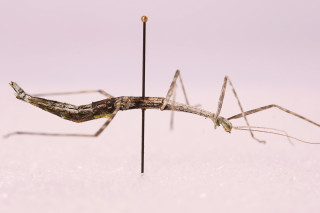
A Walking Stick
Walking sticks (order Phasmida) are good at hiding, using camouflauge to appear similar to the plants that they rest on. This specimen is from southern Utah but they are also occasionally found in Salt Lake County.
Catalog #: UMNH.ent.0069557
-
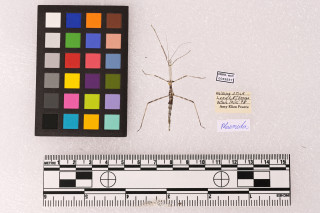
A Walking Stick
Walking sticks (order Phasmida) are good at hiding, using camouflage to appear similar to the plants that they rest on. This specimen is from southern Utah but they are also occasionally found in Salt Lake County.
Catalog #: UMNH.ent.0069557
-
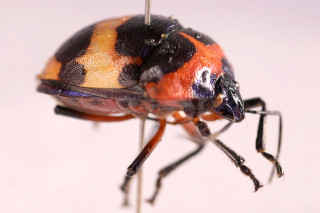
Shield Bug
This lovely shield bug was collected by the museum’s executive director Dr. Jason Cryan who is also an entomologist. Although they can be colorful and lovely, these shield bugs are unwanted pests of tea plantations in Asia.
Catalog #: UMNH.ent.0081939
-
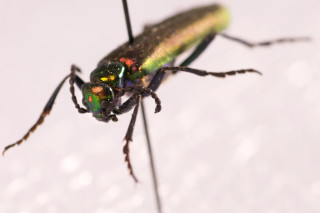
Blister Beetle
This iridescent blister beetle is found throughout the intermountain west in association with flowering vetches. This particular specimen is nearing it’s century birthday.
Catalog #: UMNH.ent.0020067
-
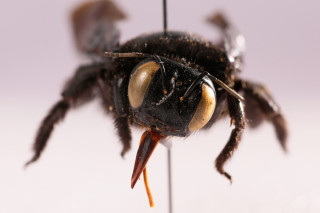
Giant Bumblebee
The collector, Don Rees, was referred to as the “Father of Mosquito Abatement in Utah”, and was the director of biological sciences at the University of Utah from 1951 to 1965. He was responsible for the grant money that allowed the biology building to be built. This giant bumblebee from Indonesia that he collected is another part of his tremendous legacy.
Catalog #: UMNH.ent.0005696
-
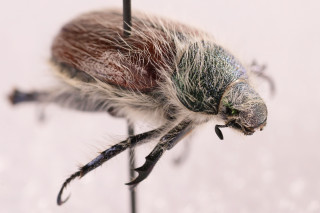
Scarab Beetle
It won’t surprise you that this scarab beetle is sometimes called the “Little Bear” or “Hairy Bear” because of its overall fuzziness. It’s native to western North America. It might not be Utah’s biggest scarab beetle but with that green metallic coloration, it’s arguably our cutest.
Catalog #: UMNH.ent.0054794
-
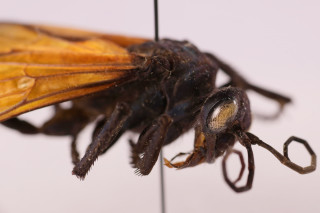
Tarantula Hawk Wasp
This tarantula hawk wasp (family: Pompilidae) is one of the many uniquely desert- adapted invertebrates we find locally. Though this family certainly includes Utah’s largest wasps, you can be sure if you encounter one, she’s not interested in people. They are quite busy searching for a tarantula host for their babies.
Catalog #: UMNH.ent.0030309
-
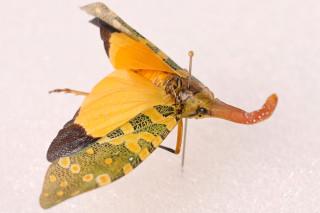
Lanternfly
This interesting lanternfly, Pyrops candelaria, was collected by Dr. Jason Cryan in Malaysia and like other lanternflies feeds on the sap of certain trees in Asia. Though one of the prettiest bugs, they can be damaging to trees.
Catalog #: UMNH.ent.0085817
-
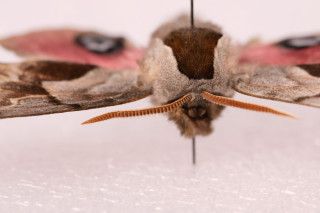
One-eyed Sphinx
This stunning moth, the one-eyed sphinx, Smerinthus cerisyi, was donated to the museum by local self-taught lepidopterist Jacque Wolfe. We were fortunate enough to also receive his field notes, which we make available through the Marriott Library and can be found here.
Specimen database record on SCAN.
Catalog #: UMNH.ent.0053591
1 of 14
